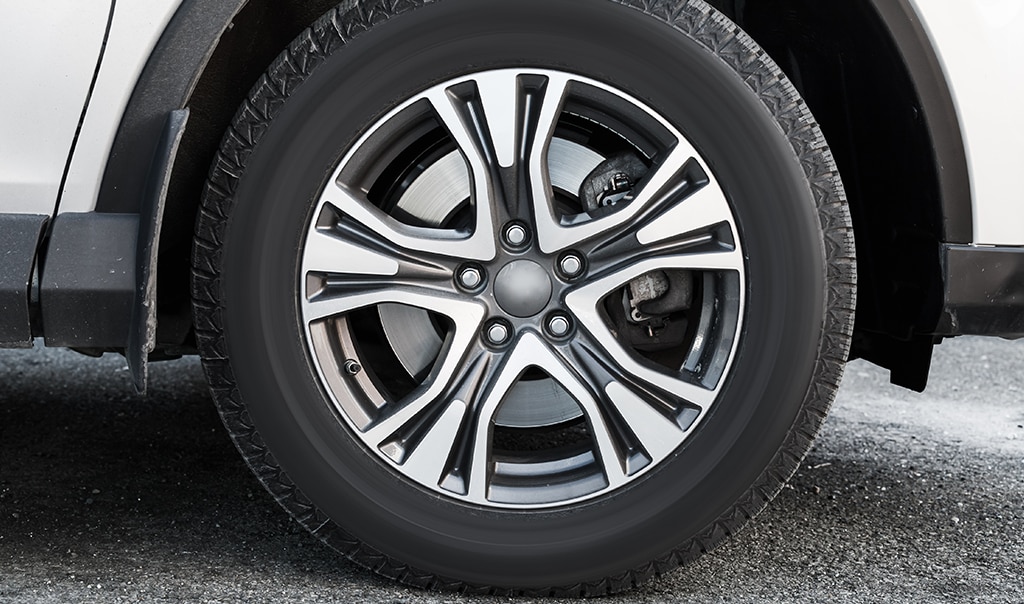Tips for Handling a Tire Blowout


For many drivers, there is nothing more frightening or potentially dangerous than a tire blowout at almost any speed. With all the advances in safety standards and technology, why are tire blowouts still such a significant safety issue? One reason may be that since blowouts are now a rarer occurrence, when they do happen, drivers are less prepared to handle them and react properly. When a tire blows out, it can only take about ¼ second before your ride suddenly becomes a struggle to control. How you react can make all the difference in how the situation resolves itself. The first step is staying calm and remembering some tips that can help you maintain control of your vehicle.
What Does a Tire Blowout Sound Like?
Expect to hear three key sounds that may vary depending on your specific situation. First, you may hear a loud boom or bang of the tire popping reverberating through your car. You may then hear a whooshing sound or the sound of the air quickly escaping from the tire, and finally, a repeated flapping or flopping of the deflated tire hitting the road.
What Does a Tire Blowout Feel Like?
When a tire explodes while you’re driving, first you will feel the vehicle slow down, then it will pull strongly to the left or right depending on which tire burst.2 If a front tire burst, you should feel the force mostly within the steering of your vehicle. With a rear tire, you should feel it more in the seat or body of the car. Whether the blowout occurred in the front or back, your response should be the same in either situation.
How to Drive Through a Tire Blowout
According to the Ontario Ministry of Transportation and other safety experts, there are some important tips and best practices to remember if you experience a tire blowout.
- Keep a firm grip on the steering wheel.
- Do not slam on the brakes.
- Let your car slow down gradually by taking your foot off of the gas pedal.
- Pull to the side of the road once you have slowed to a safe speed.
- Activate your emergency flashers.1
What to Do After a Tire Blowout
After a blowout, only exit your vehicle if you are certain you are safely off the road and out of harm’s way. Turn your emergency flashers on to alert other drivers, and if safe to do so, put out reflective cones or triangles if you have them. If it is not safe to change the tire where you are, or you are unsure how, call for roadside assistance. 2
Also keep in mind that a spare is only recommended for emergencies and should not be driven for long distances or at high speeds. Take the time now to read your owner’s manual to learn where your spare tire and necessary tools are located. Your manual may also provide instructions on how to change a flat tire. It is a good idea to be familiar with these procedures before you get stuck on the side of the road.
How to Prevent a Tire Blowout
The good news is that many tire blowouts are preventable with the proper effort and attention. Most occur from May through October when the road surface is the hottest, resulting from an underinflated tire, excessively worn treads, or an overloaded vehicle. A routine inspection of your tires to check for slow leaks, wear and tear, and proper pressure is important. Keeping your load light, within your vehicle manufacturer’s recommendations (found in the same spot as the recommended tire pressure), can help too.3
Additional tire care measures to take are:
- Buy the right tires for your vehicle
- Have regular tire rotations and alignments
- Check the tire tread depth using a Toonie (Place the coin in the tread of all four tires to check the depth).4
Learn more about what to do if your car breaks down and other steps to take to help stay safe on the roads from our Prepare and Prevent here.
Sources:
1 II. Dealing with emergencies, If a tire blows out, Ontario The Ministry of Transportation. http://www.mto.gov.on.ca/english/dandv/driver/handbook//section2.12.6.shtml
2 Safe and Responsible Driving, Ontario The Ministry of Transportation. http://www.mto.gov.on.ca/english/dandv/driver/handbook//section2.0.0.shtml
3 Tire Pressure Monitors, Transport Canada. https://tc.canada.ca/en/road-transportation/driver-assistance-technologies/tire-pressure-monitors
4 Ultimate Guide to Tire Checks: Tread Depth, Air Pressure, and more. 2019. https://www.canadadrives.ca/blog/maintenance-tips/tire-maintenance-guide-checking-tire-tread-depth-and-air-pressure